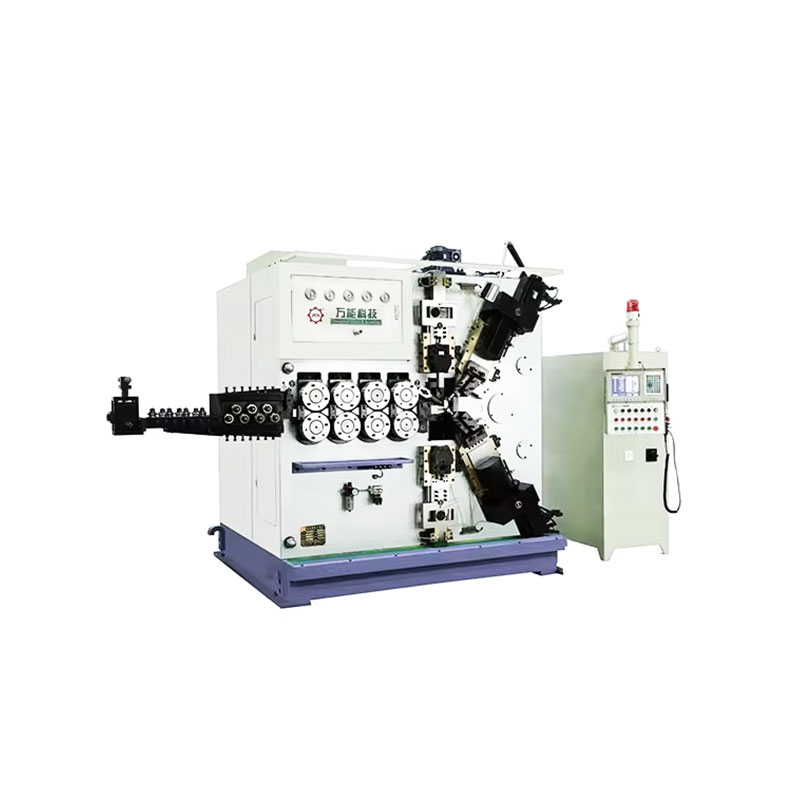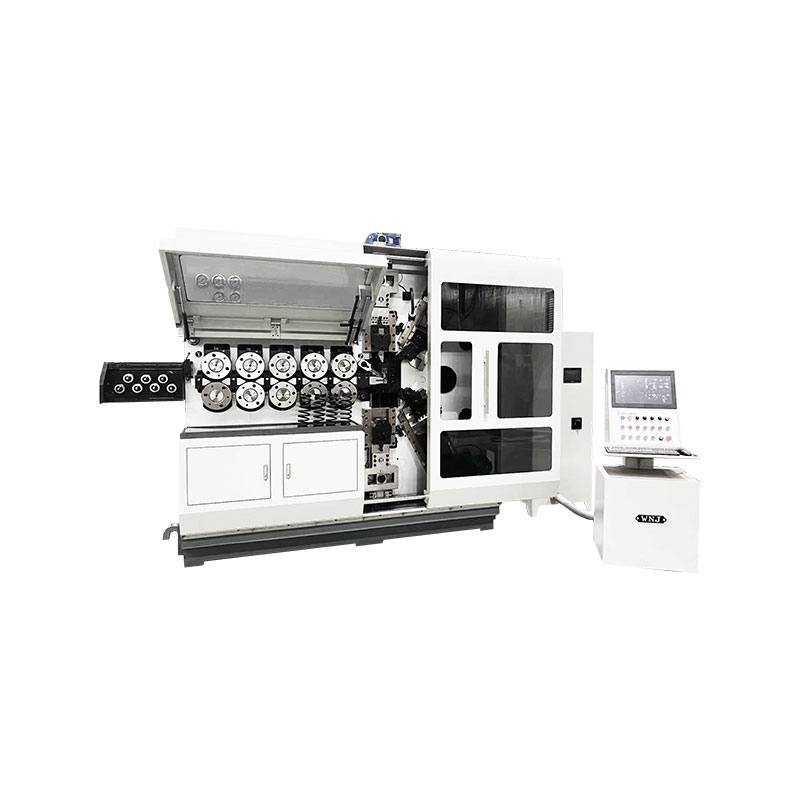Here's how a CNC spring machine operates, broken down into its essential functional broken down into its essential functional steps:
Content
•An operator uses specialized software on the machine's computer control panel.
•The desired spring or wire form's desired spring or wire form's exact specifications are inputted: wire diameter, outer/inner diameters, number of coils, coil pitch (spacing), free length, end configurations (hooks, loops, bends, angles), and any special features.
•The software converts these inputs into a precise set of machine instructions (like G-code), defining every movement and action.
•A coil of metal wire (steel, stainless, brass, etc.) is, brass, etc.) is mounted on a payoff reel.
•The wire feeds through a stra The wire feeds through a straightening unit consisting of multiple rollers. These rollers apply controlled pressure to remove any curvature or kinks from the coiled wire, ensuring perfectly straight wire enters the forming area.
•Lubrication may be applied to the wire to reduce friction and tool wear.
•Straightened wire passes between a pair of knurled feed rollers.
•A dedicated servo motor precisely controls these rollers.
•Based on the program, the servo motor rotates the rollers by an exact amount, pushing a precisely measured length of wire forward into the forming zone. This controlled feed determines critical dimensions like the spring's overall length and coil spacing.
•The fed wire enters the forming area, surrounded by several movable forming, surrounded by several movable forming tools (fingers, slides) mounted on servo-driven posts and positioned near a central positioned near a central mandrel (arbor) or forming pin.
•The machine's computer controller sends commands to individual servo motors controlling each forming tool axis independently and simultaneously.
•These servos move the tools in complex, coordinated paths:
•Tools slide radially inward/outward to bend the wire or define diameters.
•Tools rotate to wrap the wire around the mandrel, forming coils.
•Tools move axially to control the pitch (distance between coils) as the wire feeds.
•Tools press or bend to create end forms like hooks, eyes forms like hooks, eyes, or complex bends.
•Multiple tools act in rapid sequence, progressively bending and shaping the wire according to the programmed geometry. The computer ensures perfect timing and positioning for every tool movement relative to the wire feed tool movement relative to the wire feed position.
•Once the final shape is fully formed, the program triggers a dedicated cut-off servo program triggers a dedicated cut-off servo axis.
•A hardened steel cutting blade (guillotine style or rotating) moves forcefully against a fixed anvil or counter-blade.
•This action cleanly shears the finished spring or wire form from the trailing wire stock with precise timing.
•The freshly cut finished part is The freshly cut finished part is typically pushed out of the forming typically pushed out of the forming area by a retracting tool or simply drops away by gravity, often down a chute into a collection often down a chute into a collection bin.
•All forming tools simultaneously retract back to their programmed starting ("home") positions.
•The feed rollers immediately advance the next precise length of wire.
•The entire cycle (The entire cycle (steps 3-6) repeats continuously at high speed.


TK-13200、 TK-7230 TK-13200、 TK-7230 12AXES CNC SPRING COILING MACHINE...
See Details
TK-13200、 TK-7230 TK-13200、 TK-7230 12AXES CNC SPRING COILING MACHINE...
See Details
TK12120 TK-12120 12AXES CNC SPRING COILING MACHINE...
See Details
TK-6160 TK-6160 CNC SPRING ROLLING MACHINE...
See Details
TK-6120 TK-6120 CNC SPRING ROLLING MACHINE...
See Details
TK-5200 TK-5200 5AXES CNC SPRING COILING MACHINE...
See Details
TK-5160 TK-5160 5AXES CNC SPRING COILING MACHINE...
See Details
TK-5120 TK-5120 5AXES CNC SPRING COILING MACHINE...
See Details